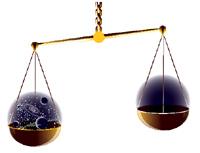Nobel Prize in Physics for discoveries on symmetry fractures

XX. In the mid-twentieth century, the rupture of symmetry appears for the first time in the investigation of the basic principles of matter. At that time, physicists endeavoured to achieve a great dream: to unify in a single theory the smallest bricks of natural matter (elementary particles) and all existing forces.
But it was not easy. In the new accelerators, never seen particles appeared, most of which did not correspond to the simple model of atoms formed by neutrons, protons and electrons. As research progressed, protons and neutrons were formed by three quarks. And the quarkas were precisely those particles that were appearing in the accelerators.
At present, the Standard Model collects all the findings of elementary particles. According to him, elementary particles are divided into three families, but only the first ones are stable enough to produce matter. The particles of other two families, heavier than the previous ones, exist in very little time.
To reach this model, physicists have had to overcome a series of obstacles. The main problem was that elementary particles were supposed to comply with the laws of symmetry. That is, if a certain particle appeared, this meant that its opposite was to exist.
But little by little they saw that the laws of symmetry were not always fulfilled. The experiments showed that in some cases the symmetry was broken, which put the model into question. No one knew why that was happening. And in 1972, the young researchers Makoto Kobayashi and Toshihide Maskawa, endowed with the calculations of quantum physics, found a solution: to understand the rupture of symmetry it was necessary to have three families of quarks.
It was a brave idea, but the Standard Model picked up those supposed quark. And then they have discovered the quarks calculated by Kobayashi and Maskawa.

Physical difference elementary particles
Thus, as indicated, the Standard Model divides elementary particles into three families. The heavier particle (top quark) is 300,000 times heavier than the lighter particle (electrons). Why this kind of difference?
Most physicists consider that the cause is another rupture of symmetry: Higgs mechanism. According to this theory, in the early phases of the universe, the Higgs mechanism broke the symmetry between forces, giving different masses to the particles.
The first stone of this theory was put by Yoichiro Nambu in 1960, when he created the idea of breaking his own symmetry. Nambu worked on the theoretical calculations of superconductivity. And later he applied the natural rupture of symmetry that occurs in this phenomenon to the world of elementary particles. His mathematical tools have been fundamental to understanding the current Standard Model.
Buletina
Bidali zure helbide elektronikoa eta jaso asteroko buletina zure sarrera-ontzian











